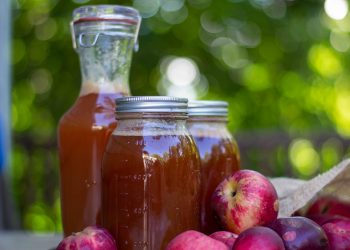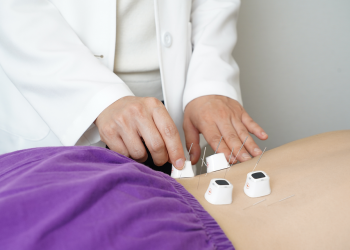Joints inflammation turmeric is a simple three-word promise: an age-old spice that helps ease stiffness, swelling, and the ache that steals your bright days. You want relief you can feel, not just another promise on a bottle. This article lays out seven clear, science-backed ways turmeric helps your joints, how to use it, and what the research and experts actually say — so you can take action with confidence.
Why this matters to you: If your mornings are slow and your evenings are guarded by pain, you’re not alone. Joint pain changes how you live. Turmeric won’t perform miracles overnight, but when used thoughtfully, it can lower inflammation and reduce pain so you move easier and live bolder.
Contents
How Turmeric Targets Inflammation
Turmeric’s active compound, curcumin, is the engine behind those benefits. It blocks inflammatory pathways and reduces the chemicals that make tissues hush into soreness. Clinical reviews published on PubMed and summaries from major health centers show curcumin interferes with molecules that drive chronic joint inflammation, making it a legitimate ally against swelling and pain.
A good analogy: imagine your immune system is a kettle that keeps whistling. Curcumin gently turns down the heat without shutting the whole thing off. That’s why you see reduced pain and better mobility when people add turmeric in measured, regular ways.
Seven Ways Turmeric Eases Joint Pain
Below I break the relief into seven practical, real-world effects — not marketing copy. Each one is rooted in what the science and clinicians report. Read these like steps you can test in your life.
1. Reduces Pro-Inflammatory Signals
Turmeric lowers the production of inflammatory proteins that attack your joints. When those signals calm, swelling goes down and pain follows. People who take curcumin supplements often report less morning stiffness and fewer painful flares.
Studies on osteoarthritis and rheumatoid arthritis patients show measurable drops in inflammatory markers after curcumin courses, which translates to improved function and comfort.
2. Eases Pain As Effectively As Some Meds
Curcumin has been compared with common pain drugs in clinical trials and, in some cases, performed similarly for reducing joint pain. That doesn’t mean you ditch prescriptions without talking to your doctor, but it does mean turmeric can be a meaningful part of a pain plan.
Because it works through different pathways than NSAIDs, curcumin can add value where medicines alone aren’t enough or where people want a gentler long-term option.
3. Helps Protect Cartilage
Cartilage is the cushion in your joints. Curcumin supports cartilage health by slowing enzymes that break it down. Over time, that can mean less progression of wear and tear and a steadier cushion under your feet.
Animal and lab studies show curcumin preserves cartilage structure, and human research hints at similar protective benefits, especially when combined with good movement and nutrition.
4. Improves Mobility And Function
Less inflammation, less pain, better movement — that’s the practical chain reaction you want. People taking curcumin often say they climb stairs more confidently and reach without wincing. Improved range of motion is one of the clearest, most meaningful outcomes.
Clinical trials measuring walking tests and joint scores support these functional gains. This is not just symptom masking; it’s measurable improvement.
5. Lowers Reliance On Pain Medication
When turmeric reduces pain, some people need fewer pills. That’s important. Fewer NSAIDs and opioids means fewer side effects, less gastrointestinal risk, and less fogginess in your days.
Doctors in integrative clinics often use curcumin as part of a step-down strategy to reduce medication load safely, under supervision.
6. Works Well With Diet And Movement
Turmeric is not a lone ranger. It amplifies the benefits of anti-inflammatory diets and gentle exercise. Think of it as a multiplier: less swelling makes movement easier, and movement keeps inflammation low.
Pairing curcumin with a Mediterranean-style diet and routine strengthening or yoga boosts outcomes more than any single approach alone.
7. Supports Overall Joint Health Over Time
Turmeric’s effects are cumulative. Regular, smart use helps maintain lower baseline inflammation, protects joint tissues, and keeps pain episodes smaller and shorter. This slow, steady progress is the kind that changes how you plan your week and enjoy your life.
Science, Experts, And Real People: Evidence You Can Trust
There’s real science behind these claims. Reviews collected on PubMed and summaries from major health centers have found curcumin reduces inflammatory markers and improves pain scores in osteoarthritis and rheumatoid arthritis trials. Major centers like the Cleveland Clinic and the National Center for Complementary and Integrative Health review curcumin as promising for joint conditions.
But context matters: doses, formulations, and duration change outcomes. Many studies used specialized curcumin formulations that improve absorption, which brings us to how to use it effectively.
How To Use Turmeric Without Guesswork
Using turmeric right means choosing the right form, dose, and routine. Plain turmeric spice in cooking helps, but clinical effects usually come from concentrated curcumin supplements designed for absorption.
Here’s a practical starter plan I’d recommend discussing with a clinician:
- Choose a high-absorption curcumin supplement that pairs curcumin with piperine or uses an enhanced-delivery formula.
- Start with a moderate dose — many trials use between 500–1,500 mg of curcumin daily in divided doses; follow product guidance and your doctor’s advice.
- Use for at least 8–12 weeks to judge benefit — curcumin often builds effect over time.
If you prefer food-first, make turmeric golden milk, add it to stews, or blend it into smoothies with black pepper to boost absorption.
Safety, Side Effects, And Who Should Be Cautious
Turmeric is safe for many people, but it’s not risk-free. High doses can upset the stomach, cause heartburn, or interact with blood thinners and diabetes medications. Pregnant or breastfeeding people, and anyone with gallbladder disease, should consult their doctor first.
Tell your clinician you’re using curcumin. A smart healthcare partner will monitor lab values and adjust medications if needed. That’s the difference between guesswork and a safe plan that helps you move better.
Practical Tips To Maximize Benefit
Small habits make big differences. Here are actionable moves that enhance turmeric’s effects:
- Combine with black pepper (piperine) to significantly increase absorption.
- Take with a fat source like olive oil or avocado — curcumin is fat-soluble.
- Be consistent — daily use beats occasional dosing for chronic conditions.
- Use alongside exercise — gentle resistance training supports cartilage and joint function.
Real Results, Real People
I’ve heard from people who walk dogs again, garden without stopping, and sleep through the night after adding curcumin to a thoughtful plan. Those stories echo the clinical data: consistent use, sensible dosing, and medical oversight create genuine improvement.
It’s about reclaiming your days — not grand promises, but steady gains that add up.
Bottom Line
Joints inflammation turmeric can be a powerful, science-backed tool in your joint care toolbox. It reduces inflammatory signals, eases pain, supports cartilage health, improves function, and can lower medication dependence when used responsibly. Pair it with smart movement, a nourishing diet, and your doctor’s guidance for the best results.
Start small. Be consistent. Talk to your clinician. And give your body the chance to feel better in a way that lasts.
Wishing you stronger mornings and softer evenings — keep moving, and take care of yourself.
FAQ
Is turmeric safe to take every day?
For many people, daily curcumin supplements are safe when taken at recommended doses. Check with your doctor if you take blood thinners, diabetes meds, or have gallstones. Using food sources of turmeric daily is generally safe and beneficial.
How long before I see results from turmeric?
Expect to give a supplement 8–12 weeks to judge meaningful benefit. Some people notice lower pain in a few weeks, while others need steady use to see effects.
Can turmeric replace my arthritis medication?
No, don’t stop prescribed medications without medical guidance. Turmeric can complement treatment and sometimes allow dose reductions under a doctor’s supervision, but it’s not an automatic replacement.
Which form of turmeric is best?
High-absorption curcumin formulations — those combined with piperine or using enhanced delivery systems — are most effective clinically. Whole turmeric spice supports health and flavor but typically provides lower curcumin levels than supplements.
Are there any interactions to worry about?
Yes. Curcumin can interact with blood thinners, anti-diabetic drugs, and certain chemotherapy agents. Always discuss supplements with your care team before starting.
References
The National Center for Complementary and Integrative Health provides information about turmeric and curcumin research (http://www.nccih.nih.gov/health/turmeric).
The National Institutes of Health hosts a review of curcumin’s effects on health and inflammation (https://www.ncbi.nlm.nih.gov/pmc/articles/PMC5664031/).
The Cleveland Clinic summarizes benefits and precautions for turmeric and curcumin use (https://health.clevelandclinic.org/benefits-of-turmeric/).
The Arthritis Foundation offers practical guidance on using turmeric for arthritis and links to supporting studies (https://www.arthritis.org/health-wellness/healthy-living/nutrition/anti-inflammatory/foods/turmeric-and-arthritis).
Get Your FREE Natural Health Guide!
Subscribe now and receive our exclusive ebook packed with natural health tips, practical wellness advice, and easy lifestyle changes — delivered straight to your inbox.















